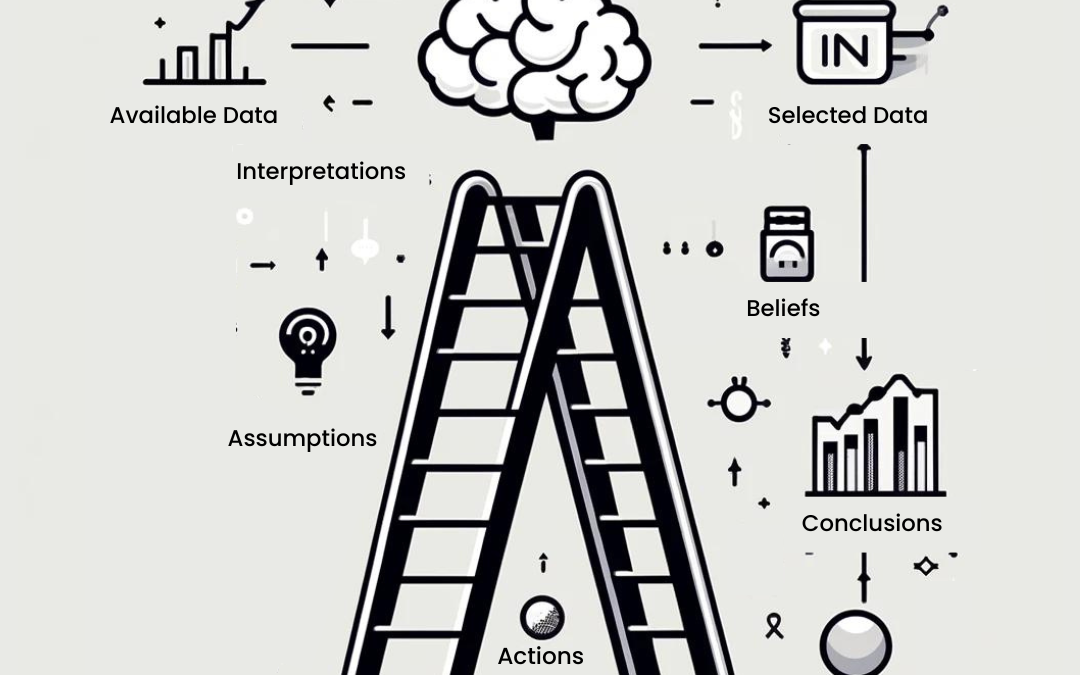Reading Time: 6 minutes
Key Points
- The Ladder of Inference, developed by former Harvard professor Chris Argyris, is a tool designed to aid in more informed and reality-based decision-making by avoiding rushed conclusions.
- The ladder has seven steps: Available Data, Selected Data, Interpretations, Assumptions, Conclusions, Beliefs, and Actions, each representing different mental processes.
- By consciously applying this ladder, one can scrutinize each step of their decision-making processes, ensuring decisions are well-rounded and based on reality.
The Ladder of Inference Fundamentals
In our daily lives, particularly in the business sphere, making decisions based on reality is crucial.
However, we often find ourselves jumping to conclusions and acting on them, bypassing essential parts of the reasoning process.
The Ladder of Inference, conceptualized by Chris Argyris, a former Harvard professor, serves as an invaluable tool to refine our thinking and make reality-based decisions.
It’s also a useful instrument to collaboratively challenge and enhance mutual understanding and conclusions.
Leverage is about gaining disproportionate effectiveness through intelligent action.
The Ladder Explained
The Ladder of Inference delineates our mental processes into seven sequential steps:
- Available Data: Represents observable reality.
- Selected Data: We filter available data based on our prior experiences and beliefs.
- Interpretations: We assign meaning to the selected data.
- Assumptions: Personal assumptions are made based on our interpretations.
- Conclusions: Derived from our assumptions.
- Beliefs: Formulated from our conclusions.
- Actions: The final step where we act on our beliefs.
These steps generally occur swiftly and subconsciously. Conscious application of this ladder enables us to introspect and recognize where we might be jumping to conclusions.
Actionable Application
Application:
When facing a decision, pause and reflect. Identify where you are on the ladder. Ask guiding questions:
Actions: What alternatives exist? Why is this action right?
- Beliefs: What beliefs support this action? Based on what conclusions?
- Conclusions: What assumptions lead here? Why?
- Assumptions: Are these valid? Why are they made?
- Interpretations: Is the data objective? Other meanings?
- Selected Data: What’s ignored? Other sources?
Example:
Consider a manager contemplating firing a developer due to poor performance. By applying the Ladder of Inference, the manager can explore alternative reasons for the poor performance, such as unreasonable deadlines or personal issues, avoiding a potentially rash decision to fire the employee.
How to Practice Using Ladder of Inference
- Reflect Regularly: Apply the Ladder in your decision-making to avoid bias.
- Question Your Reasoning: Validate each step to avoid quick conclusions.
- Use the Worksheet: Apply the provided tool in daily life for informed decisions.
The Ladder of Inference ensures decisions are grounded in reality, not rushed conclusions. By using this model, we make more informed, rational, and beneficial decisions.
Questions to Ask

